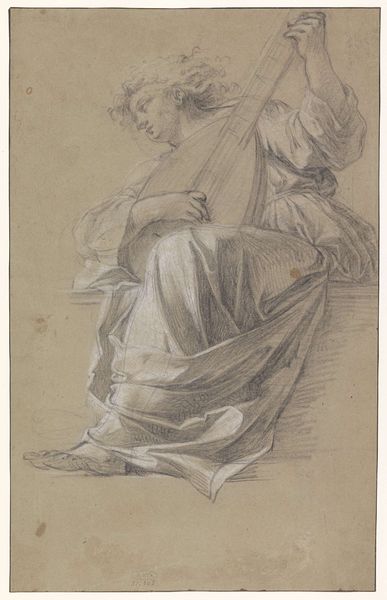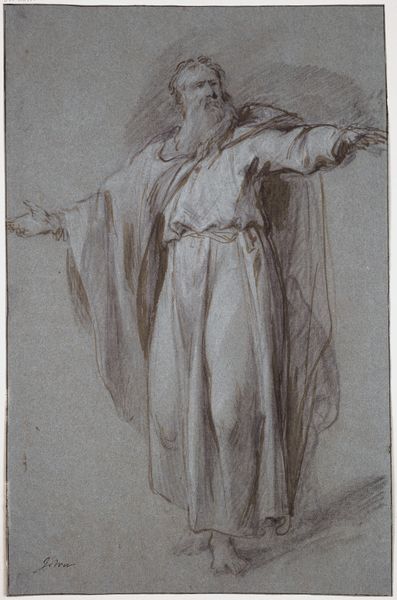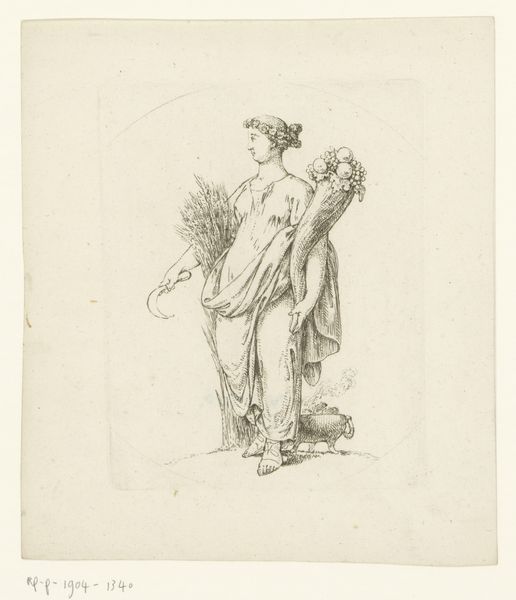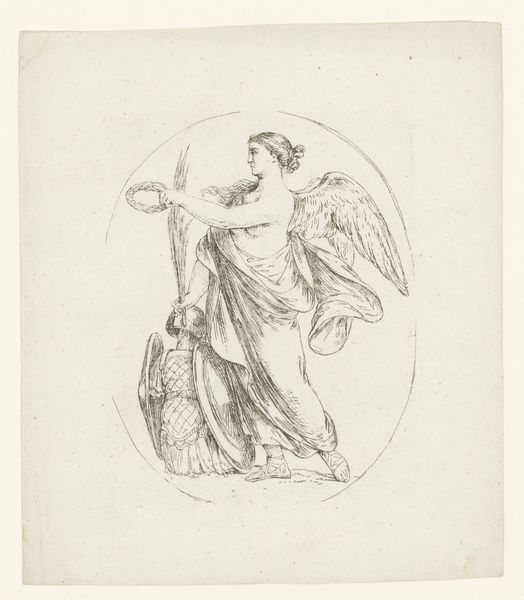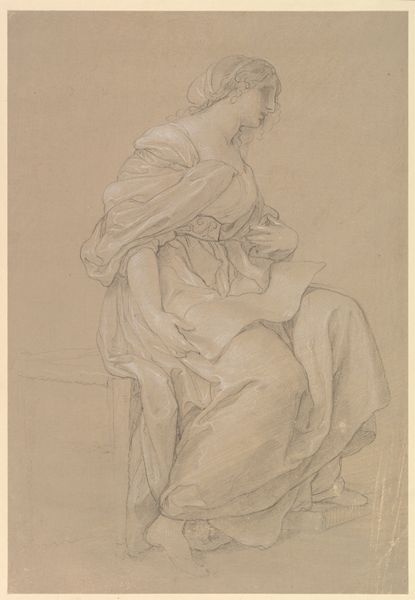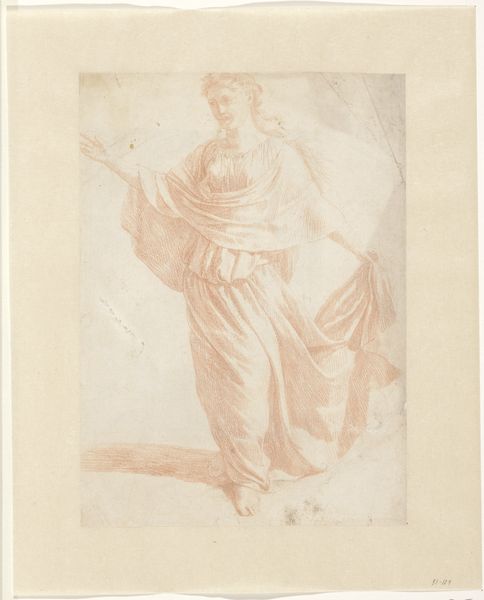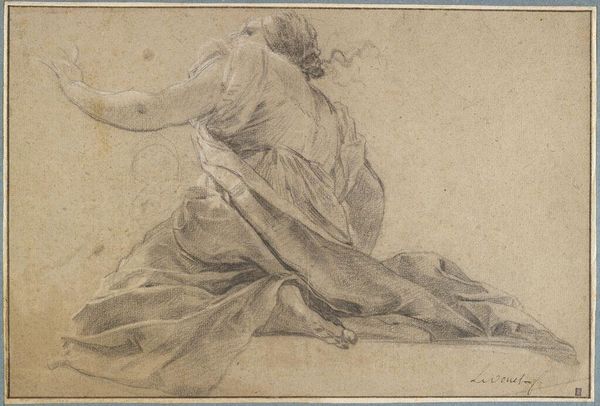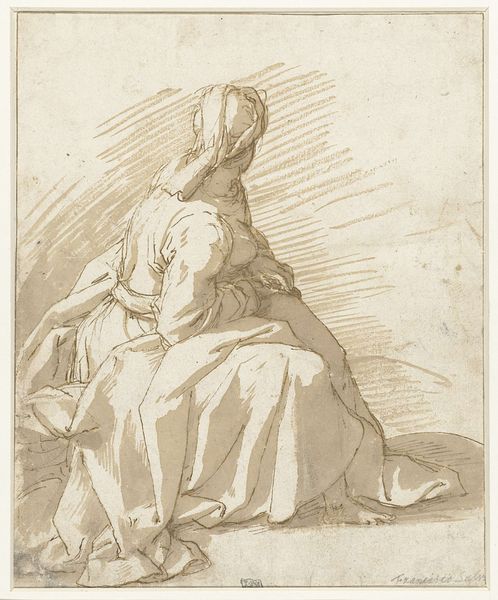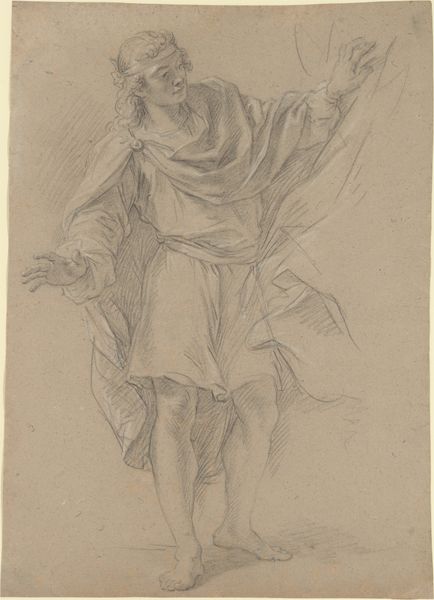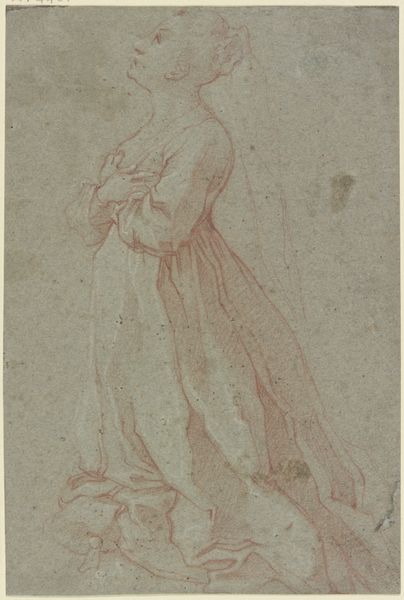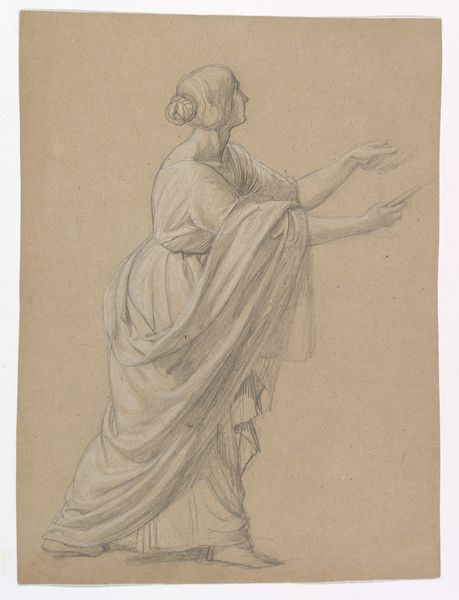
drawing, pencil
#
portrait
#
drawing
#
neoclacissism
#
figuration
#
pencil drawing
#
pencil
#
academic-art
Dimensions: height 278 mm, width 240 mm
Copyright: Rijks Museum: Open Domain
Curator: What a graceful study! We’re looking at "Standing Young Woman with Arms Outstretched," a pencil drawing by Giovanni Battista Cipriani, likely created between 1737 and 1785. It’s an example of neoclassical academic art. Editor: My first impression is of vulnerability. The figure’s pose is open, yet her downcast gaze suggests a sense of introspection or even submission. Is she offering something or bracing herself? Curator: Cipriani’s artistic circle favored idealized forms inspired by classical antiquity. It was very much about rediscovering an artistic standard that seemed morally upright. This drawing aligns perfectly with those values through its focus on balanced proportions, precise lines, and a generally harmonious effect. Editor: Indeed, but those neoclassical ideals were not necessarily neutral. Who was allowed to take center stage and whose image were promoted. This figure's rather ambiguous gesture makes me think about who dictates the norms in art and society. Her arms are spread as if open to receive. Yet she bows her head down as in subjugation, almost a direct metaphor of expectation versus action, agency. Curator: Certainly, academic art served societal power structures by presenting prescribed norms and aesthetics. Cipriani worked within that framework and contributed to that legacy. Editor: The lack of detail draws me to focus on the lines. I also wonder about the choice of color. I almost think about terra cotta— connecting her even more concretely to neoclassical forms from antiquity and placing her in the historical and stylistic narrative that promotes the idea that the artist works, is capable of making perfect choices. Curator: His adept use of line is what makes Cipriani notable in his circles. Editor: Studying the artwork today makes me conscious about art historical canons but also how figures depicted in art and, by extension, ourselves exist at the crux of our experiences, struggles, expectations, even potential futures. Curator: Absolutely, and the role of museums in helping us think critically and openly about what we see in a historical context is indispensable.
Comments
No comments
Be the first to comment and join the conversation on the ultimate creative platform.
